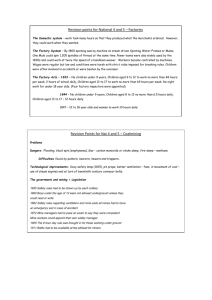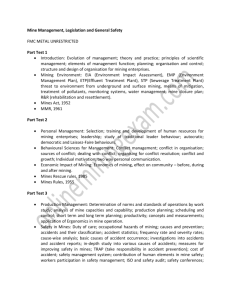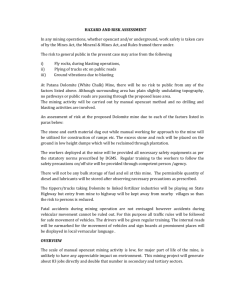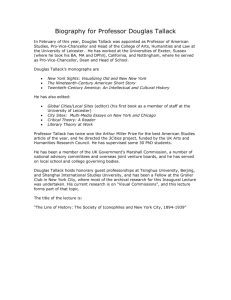How a Political Scientist Had His Head Turned
advertisement
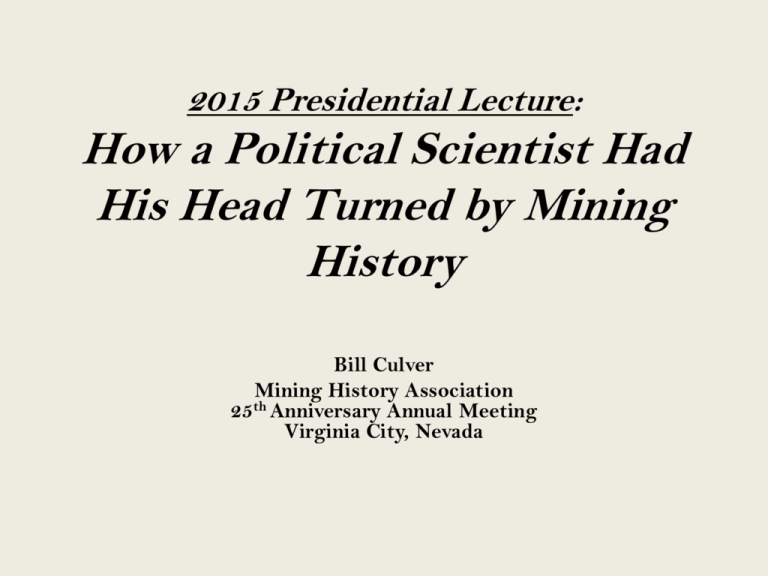
2015 Presidential Lecture: How a Political Scientist Had His Head Turned by Mining History Bill Culver Mining History Association th 25 Anniversary Annual Meeting Virginia City, Nevada #2 (1967) Chile’s Mining North Andacollo – Modern Chili wheel working silver ore Entrance gate and community are now gone due to pit expansion #3 (1969) Coquimbo Eiffel Church Guayacán, Herradura Bay, Coquimbo Urmeneta Smelter, Herradura Bay, Coquimbo - 1872 #4 (1970) Regidores in Monte Patria – Coquimbo Province #5 (1970) Allende Elected President of Chile on September 4 #6 (1973) Military Coup on September 11 Allende at Presidential Palace Time Magazine after Coup #7 (1970s) McGill University & Montreal Schulich Library of Science and Engineering Douglas Hall – Original Men’s Residence on Campus #8 (1989) Capitalist Dreams Cover of 1989 Issue Capitalist Dreams opening page #9 (1990s) National Congresses in Latin America Chilean Congress Modernization Seminar, 1997 Reorganization Planning for Peruvian Congress Reorganization, 1995 #10 (1990s) 1872 J. Science Article Journal of Science (London) April 1872 Issue #11 (1995) Historians of Latin American Mining at Plattsburgh #12 (1999) Young Douglas & Camp Douglas & Naomi, Quebec City Douglas at Camp on Little Moose Lake, Adirondack Mountains #13 (2000) A. B. Parsons, The Porphyry Coppers (1933) “Introduction” • The Braden mine and the other South American properties illustrate and confirm the statement that men make mines. • If American engineers - or perhaps British - had never laid eyes on Chuquicamata, on Rancagua, on Potrerillos, it is certain as anything can be in this world of uncertainties that the Chilean Andes would still be the undisturbed storehouse for 4 billion pounds of copper that already have gone into the industrial plants of Europe and the United States. • The huge electric shovels, the locomotives, electric generators, crushing machinery, smelting furnaces and other equipment, representing an investment of $150,000,000 [U.S. dollars] that now are busy winning copper in South America, never would have been needed but for American engineers. • And in saying this, no unkind reflection is directed at the Chileans or the people of any other country. • It is not in accordance with their tradition or temperament to conceive and carry out such projects. #14 (2001) SERNAGEOMIN Tiltil Area Tiltil-Santiago Profile line A in Map Table of Mine Claims #15 (2001) 1871 Douglas Letters Home to Naomi Original Onion Skin Copy Recopied Page in Second Book #16 (2001) Mt. Aconcagua at 22, 841 Feet/6,962 Meters View from a Mine Road Tiltil View from Coastal Range Ridge #17 (2002) Escritura for Invernada & Patent Letter Invernada incorporation Patent extension – low-grade expectations sent to Chile’s President #18 (2002) Invernada Mines on East Face of Costal Range Invernada mines and plant looking west from Tiltil Mines Plant Old working at Brillante Mine #19 (2002) Tramway & Detail Tramway from mines to plant down 2,000 feet tramway Close-up of tramway scar #20 (2002) Hunt & Original Patent T. Sterry Hunt (1826-1892) 1869 Hunt & Douglas patent #21 (2005) Harvey Hill Mine From Harvey Hill looking west Reclaimed hilltop #22 (2006) MHA Globe #23 (2015) Hernán Guerrero Operation Hiking down the tramway Mill and flotation plant across Tiltil Valley from mines #24 Douglas’ 1918 Draft Letter to “My Dear Children” “My hope is that the mining and railroad enterprises that I have been one of the instruments in developing will be carried on as heretofore;…that the value of the stocks and the rates of dividend be of very secondary consideration and in the conduct of the mines the welfare of the men under and above ground be regarded as of more importance than the cost of manufacturing copper.”
